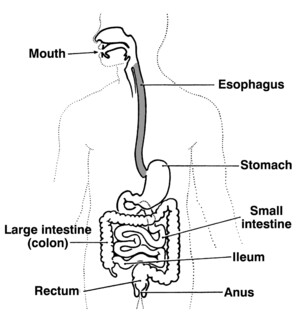- Adult Heart DiseaseDiseases of the arteries, valves, and aorta, as well as cardiac rhythm disturbances
- Pediatric and Congenital Heart DiseaseHeart abnormalities that are present at birth in children, as well as in adults
- Lung, Esophageal, and Other Chest DiseasesDiseases of the lung, esophagus, and chest wall
- ProceduresCommon surgical procedures of the heart, lungs, and esophagus
- Before, During, and After SurgeryHow to prepare for and recover from your surgery
November 9, 2016

Esophageal cancer is cancer that is present in the esophagus—a long, hollow tube in your throat that moves food and drink from the mouth to the stomach. For patients newly diagnosed with esophageal cancer, the concept of staging is often confusing. In this blog, I hope to explain the basics of staging and how surgeons and oncologists use it to treat patients with esophageal cancer.

Since cancer comes in all sorts of varieties and can be discovered early or late in the disease, doctors and other health care professionals use a staging process to measure how much cancer is present and to compare different treatments.
The staging for esophageal cancer is commonly expressed in the T, N, and M system:
- T indicates tumor
- N means node, if the cancer has spread to the nearby lymph nodes
- M refers to metastasis or spread to different areas of the body
In esophageal cancer, the T is a measurement of how deep the tumor invades the wall of the esophagus. The esophagus is made up of several layers and the deeper the tumor extends, the higher the T stage. The layers of the esophagus from the inside out are:
- Mucosa
- Submucosa
- Muscularis propria
- Adventitia
T1 indicates the mucosa or submucosa is involved; T2 means the muscularis propria is affected; T3 specifies that the adventitia is involved; and T4 indicates that the cancer has spread to structures outside of the esophagus.
The number included in the N (or lymph node) stage indicates how many lymph nodes are affected.
- N0: no lymph nodes
- N1: one to three lymph nodes
- N2: three to six lymph nodes
- N3: Seven or more lymph nodes
The M (or metastasis) stage is quite simple. If there is no spread outside the region of the esophagus, the tumor is staged as M0. If the cancer has spread outside the esophageal region, it is M1.

Once the T, N, and M levels are established, they are combined and grouped into numerical staging. For example, a patient with a T2N0M0 would be called a stage IIB. This helps guide the appropriate treatment and estimate the chance of curing the cancer. Only with accurate staging can the proper treatment and prognosis be advised.
Only with accurate staging can the proper treatment and prognosis be advised.
Staging can be done at different times during the evaluation and management of a person with esophageal cancer. A clinical stage is determined through the information from x-rays, patient history, and a physical examination. It is standard for patients to be clinically staged after a diagnosis of esophageal cancer is established. Since the recommended treatment for different stages varies widely, clinical staging should be done for all patients.
In addition to the results of the exams and tests (clinical stage), pathological staging relies on what is learned about the cancer during surgery. This surgery may be to remove the cancer and nearby lymph nodes, or to just look at how much cancer is in the body and take out tissue samples. Sometimes, the pathologic stage is different from the clinical stage. For example, the surgery may show that the cancer has spread more than was originally thought. In general, pathologic staging gives the doctors more precise and accurate information that can be used to predict treatment response and prognosis.
In general, pathologic staging gives the doctors more precise and accurate information that can be used to predict treatment response and prognosis.
It is important to note that the staging system has been developed by staging committees that collect data on thousands of patients with esophageal cancer and analyze the outcomes and survival rates over several years. Recently, this has involved the entire international community and represents a cooperative effort from many dedicated individuals.
Read more about esophageal cancer.
The opinions expressed in this article are those of the author and do not necessarily reflect the views of The Society of Thoracic Surgeons.

